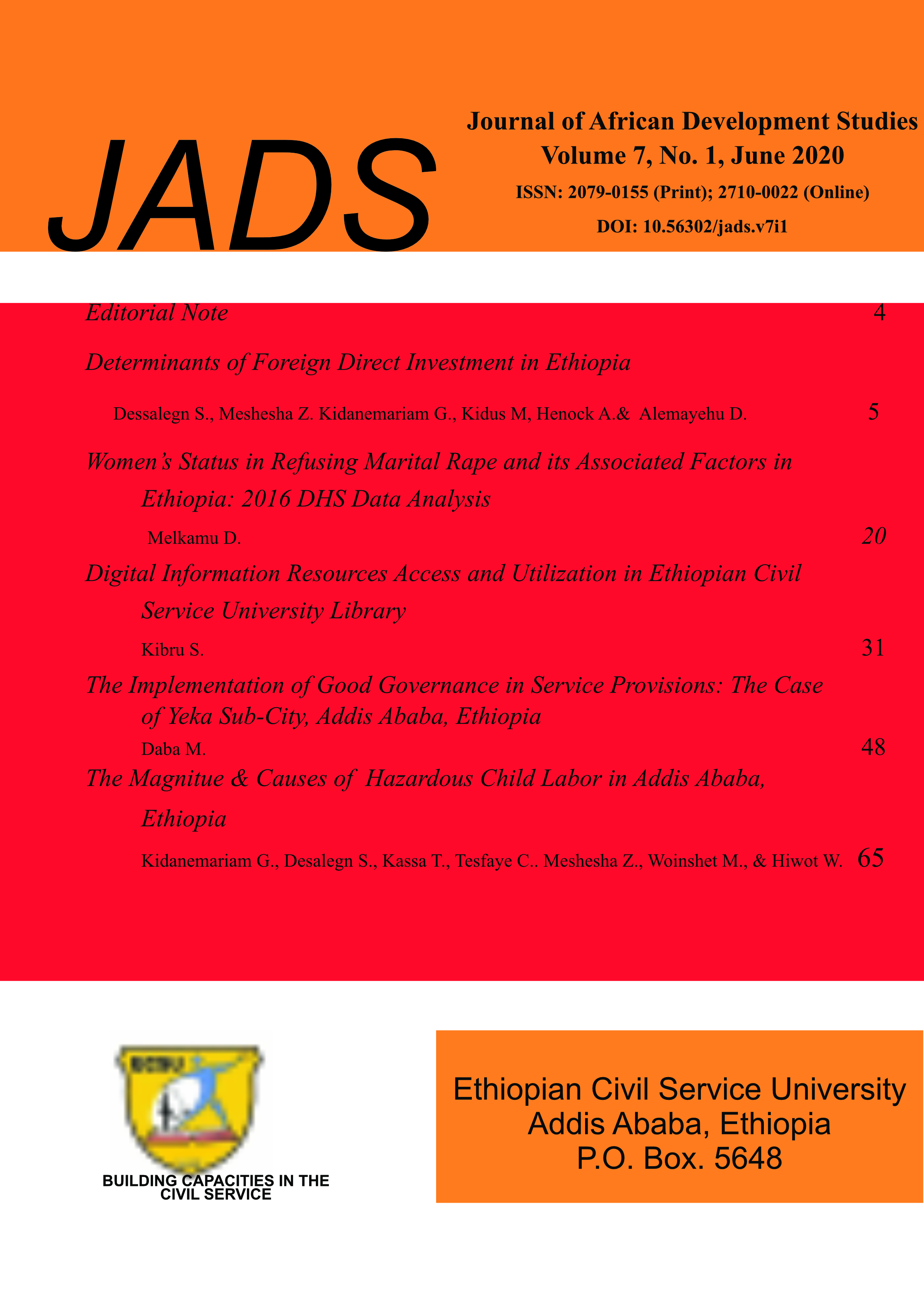The Magnitude and Causes of Hazardous Child Labour in Addis Ababa, Ethiopia
DOI:
https://doi.org/10.56302/jads.v7i1.3117Keywords:
Child labor, hazardous, magnitude, cause, Addis AbabaAbstract
The main objective of this study was to assess the magnitude and causes of hazardous child labor in Addis Ababa. To address this objective, a mixed method research design that tilts towards quantitative approach was employed. The result revealed that about 90% of child laborers in Addis Ababa are working in hazardous working conditions, which is much higher than the Sub Saharan Africa average and ILO and CSA estimates for Addis Ababa. This affects physical and mental health and moral development of the children. Considerable proportions of child laborers are working in unhealthy environment mainly in areas exposed to dust, smoke, and fume; extreme cold and heat; loud noise or vibration as well as physical, psychological, and sexual abuses because of their work. Children work or engage in child labor f or a variety of reasons. Accordingly, the most important factors behind child labor among children were found to be poverty, children’s economic interest, and rural-urban migration. Therefore, the federal and regional governments are required to collaborate to reduce poverty induced child migration from regional states to Addis Ababa. That means there is a need to have poverty reduction strategies that reduce general poverty at the source and increase incomes and hence are likely to have a positive effect on reducing child labor. Every poverty reduction strategy needs to take child labor into account.

Downloads
Published
How to Cite
Issue
Section
License
Copyright (c) 2020 Journal of African Development Studies

This work is licensed under a Creative Commons Attribution-NonCommercial-ShareAlike 4.0 International License.




